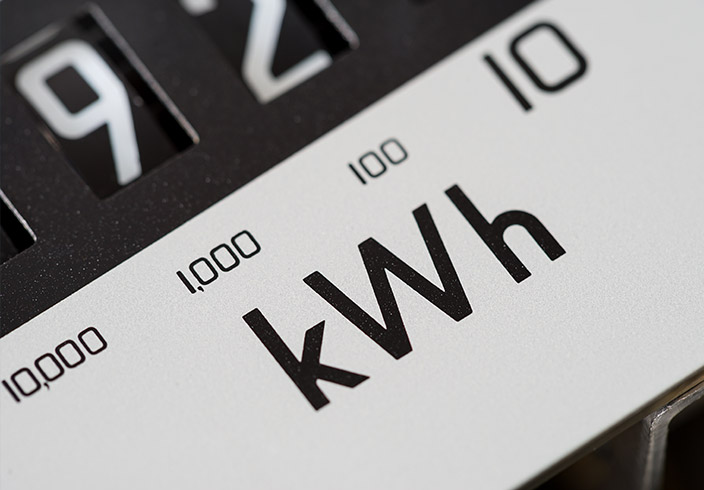The sustainable and responsible use of energy resources has been gaining in importance for years and is the focus of global debates. In order to reduce energy-related emissions and at the same time lower energy costs in times of rising prices, companies are faced with the challenge of developing effective strategies – especially for production processes in energy-intensive industries. The answer to this lies in the efficient use of energy as well as modern technologies so that companies can benefit from both ecological and economic advantages. Reducing energy costs: We provide an overview of measures, tips and technologies.
5 efficient measures to reduce energy costs
More than ever, companies are being closely looked at in terms of their environmental impact. This makes it all the more important to use the resource energy responsibly and as sparingly as possible. In this context, the energy transformation does not only have an impact on business processes: It is also becoming increasingly important for customers and potential applicants to know how a company is helping to counteract the climate crisis and create a climate-friendly future.
1. Carry out an energy audit in the company
In order to obtain a comprehensive overview of one’s own energy consumption and energy efficiency, an energy audit is a logical first step. This involves systematically examining all processes and energy-intensive operations that generate emissions in business operations. For the analysis, all relevant information is first collected, including building plans, energy bills, production processes and other operational data that are relevant for the survey. In addition, a certified energy auditor can be commissioned to check physical factors such as heating, ventilation and air conditioning systems as well as lighting systems inside and also outside the buildings during an inspection. The collected data is then evaluated and listed in detail in a final report, which also contains suggestions for potential savings as well as cost reductions.
2. Focus on energy-efficient lighting
Production facilities in particular are dependent on good lighting so that work can be carried out under optimal lighting conditions – often around the clock in shift work. In order to provide adequate lighting quality at the same time as not consuming unnecessary energy, the right lighting systems and light sources are required. The use of lighting control systems or motion detectors also ensures that certain areas are only specifically illuminated as long as they are needed.
3. Optimising the heating and cooling systems
In the field of automation of buildings, intelligent regulation and control systems enable precise control of heating and cooling systems. If sensors such as room sensors and thermostats are set according to the required times, some cost savings can already be achieved. Where possible, flow temperatures can also be reduced by a few degrees – the resulting waste heat or cold can in turn be used for other processes and applications and thus promotes a return of energy to the cycle.
4. Use of energy-saving models and standby switch-off
An effective energy efficiency strategy for a company also includes taking a look at seemingly smaller areas, because here, too, a positive development in energy efficiency can be ensured. Reducing standby times and using the energy-saving mode can reduce the unnecessary energy consumption of electronic devices.
5. Awareness among employees for energy-efficient behaviour
Resource-conserving behaviour is promoted by making employees aware of the measures to be implemented and teaching them to use energy resources in a sustainable manner. Each individual can play an active role in this process by disclosing the energy efficiency strategies in a transparent and comprehensible manner, by the management setting a good example and by regularly communicating savings successes.
Reducing energy costs: The use of energy-efficient technologies in production
The use of renewable energy plays an essential role in reducing energy costs – after all, electricity from renewable energy sources is becoming cheaper and cheaper. In order to fully exploit its potential and also to be able to use it in energy-intensive processes, modern technological possibilities are required. Thermal energy storage solutions such as the ThermalBattery™ from ENERGYNEST play an important role here.
The battery is charged with cheap electricity at off-peak times and the energy is stored inside in a special concrete. As soon as it is needed, the energy is released again as heat or steam. In this way, fluctuations in the availability of renewable energies can be balanced out – for a reliable supply of green energy. In addition, the ThermalBattery™ is able to capture energy from waste heat to subsequently make it available for further applications – and thus improve the energy efficiency of production processes.
Optimising energy costs for companies: Investment in the future
One thing is clear: in order to effectively reduce energy costs and achieve measurable success, targeted measures and the appropriate technologies are required on both a small and large scale. Particularly with regard to energy-intensive production in industry, companies are often confronted with the question of how processes can be adapted without having to completely redesign them by integrating new technologies. Storage solutions such as ThermalBattery™ can be easily integrated into production infrastructures and add an additional and energy-efficient solution to the company portfolio. By using it, companies can protect themselves from fluctuating energy prices, CO2 compensation costs and grid balancing charges. In this way, they also remain competitive in the long term.
Are you interested in ENERGYNEST, or have any questions regarding our thermal energy storage solutions or our applications for your specific industry?
Don’t hesitate to drop us a line.



